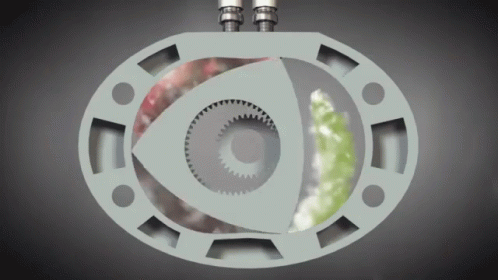
What is a Rotary Engine?
By Prasad Balkhande
Rotary engine
A rotary engine, also known as a Wankel engine, operates on a different principle than traditional piston engines. Instead of the typical four-stroke cycle (intake, compression, power, exhaust) found in most internal combustion engines, rotary engines complete the necessary processes within their design as the rotor turns continuously.

Here's a simplified description of the strokes in a rotary engine:
1. Air Intake:
- As the rotor of the rotary engine turns within the housing, one of its curved faces creates a changing chamber, which acts as the intake port.
- During this rotation, a low-pressure area is created, which draws in air through the intake port on the engine housing. This is a continuous process as the rotor keeps moving and creating new intake chambers.
2. Fuel Injection:
- Fuel injection is often used to mix fuel with the incoming air. Fuel injectors positioned strategically within the intake system spray fuel directly into the incoming air stream.
3. Compression: -
As the rotor continues to rotate, the chamber created by the rotor's movement becomes progressively smaller, compressing the air-fuel mixture.
4. Combustion: -
When the compressed air-fuel mixture reaches the spark plug, it ignites. The combustion can happen at multiple points in the engine due to the continuous movement.
- The ignited mixture pushes against the rotor's curved faces, causing it to spin within the engine housing.
- This is equivalent to the power stroke in a piston engine, where the expanding gases generate power.

5. Exhaust:
- As the rotor continues to spin, the chamber created by its movement eventually connects with an exhaust port.
- The burnt gases are expelled from the engine through the exhaust port.
- This is analogous to the exhaust stroke in a piston engine, where the spent gases are pushed out.
6. Continuous Rotation:
- After the exhaust process, the rotor continues to rotate, and the entire cycle repeats.
- The rotor's motion is what drives the engine, and this continuous cycle of intake, compression, combustion, and exhaust takes place without the need for separate strokes.
It's important to note that unlike a piston engine, a rotary engine doesn't have distinct and separate strokes. Instead, it relies on the rotor's continuous motion to complete all phases of the combustion cycle. This unique design is what sets rotary engines apart and provides them with some of their advantages and disadvantages. Since the rotary engine's rotor is in constant motion, it does not have distinct strokes like a piston engine. Instead, it achieves the equivalent of these processes through its continuous motion.
Advantage of Rotary engine
• Compact Design
• Lightweight
• High RPM capabilities
• Smooth Operation
Challenges and disadvantages
• More fuel consumption
• High emission
